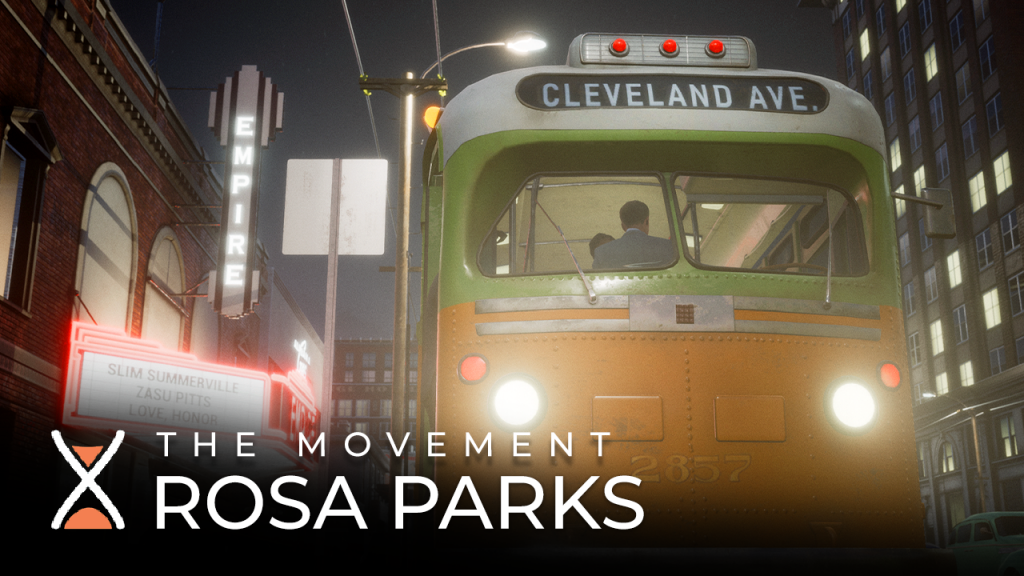T H E M O V E M E N T
HARRIET TUBMAN
DECEMBER 1ST, 1856 | NIAGARA FALLS, NEW YORK
At approximately 10:00 AM on December 1st, 1856, Harriet Tubman and four freedom seekers under her leadership were making the final leg of their 600-mile journey to freedom from the slave state of Maryland into Canada, via the Niagara Falls Suspension Bridge. Niagara Falls, on the border between the U.S. and Canada, was a popular crossing point for a larger network of safe houses and transportation routes, otherwise known as the “Underground Railroad.” Contrary to the name, the network used many forms of transportation to transport freedom seekers north. In this particular case in 1856, an actual train was used for this leg of the journey.
This was just one of 13 harrowing trips Tubman made down south to rescue over 70 individuals. These selfless acts, combined with her work as a spy and soldier during the Civil War and her decades of activism afterwards, cemented Harriet Tubman’s legacy as a true American hero.
2D VIDEO
For the best watching experience with directed camera movements, watch HARRIET TUBMAN in 2D format at the link below.
360 VIDEO (Annotated)
To fully explore the enviornment for HARRIET TUBMAN and learn more about select Points of Interest, watch the 360-formatted version here and match the POI to the list below.
POINTS OF INTEREST
Brief Points of Interest Descriptions are below.
For more detailed information and photos, please download the PDF.

Niagara Falls
The Niagara Falls are comprised of three individual waterfalls: the Horseshoe Falls, the American Falls, and the Bridal Veil Falls.

Niagara Falls Suspension Bridge
This bridge, designed by John A. Roebling, was completed in 1855, becoming the first railway suspension bridge in the world.

Monteagle Hotel
The Monteagle Hotel opened in January 1856; it was the grandest building in the area.

Witmer's Mill
This mill processed grain using water power drawn from the Niagara River.

Village of Bellevue
This town mainly emerged due to rising tourism to Niagara Falls, and was known as “Suspension Bridge” after the bridge’s completion.

Town of Clifton
This town was officially formed in June 1856 when two smaller villages merged.

British Colonial Canada
As slavery had been abolished throughout the British Empire in 1834, British Canada offered true freedom for all formerly enslaved people.

United States
Due to the passage of the 1850 Fugitive Slave Act, the northern states were no longer safe for freedom seekers.

31-Star United States Flag
The 31-star flag was created in 1851 after California joined the Union and was used for seven years.

Harriet Tubman
Harriet Tubman was one of the Underground Railroad’s most well-known conductors, directly guiding ~70 people to freedom.

Joe Bailey
Josiah Bailey was a freedom seeker who had a $1500 bounty offered for his return.

William Bailey
William Bailey was a freedom seeker and was Joe’s older brother.

Peter Pennington
Peter Pennington was a freedom seeker and the youngest member of the group led by Tubman.

Eliza Manokey
Eliza Manokey was a freedom seeker who had initially fled from slavery in early 1856.

Union Train Depot
The train station was the last stop on the path to Canada for freedom seekers on this route.

N.Y. Central Railroad Locomotive
Harriet Tubman crossed the border via train, leaving Rochester, NY early in the morning.

Railroad Passenger Car
Standard passenger cars in 1856 measured about 40 feet long and had a capacity of about 50 people.


